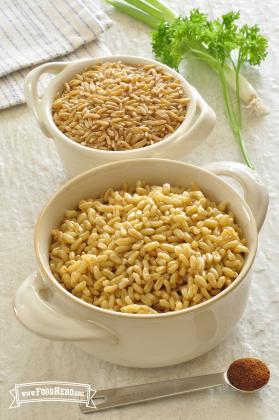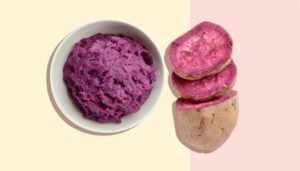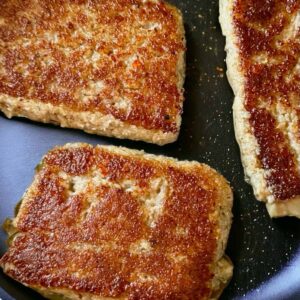
Introduction
The ancient wheat known as kamut (Triticum polonicum) got its name from the Egyptian word meaning “wheat.” Farmers cultivated the grain up until the middle of the 20th century because they loved its deep, nutty flavor. Farmers abandoned kamut in favor of higher-yielding, less taste transgenic wheat following World War II. Nowadays, kamut is seeing a comeback and is being grown all throughout the nation once more.
The kernels of kamut are two to three times larger than those of ordinary wheat, giving it a nutty flavor. While the flour is more golden than in a regular wheat type, the grains have a light brown tint.
Why is Kamut “Healthy Eats”?
Cooked kamut has 251 calories, 2 grams fat, 52 grams carbs, and 11 grams protein in one cup. It is full of B-vitamins that increase energy, such as niacin and thiamin.
Despite being related to wheat, kamut is generally tolerated by people with gluten allergies. If you’re switching to kamut instead of wheat, see your physician or a qualified dietitian for advice on how to include it into your diet. Also, make sure to check the labels because some manufacturers may include gluten.
What To Do With It?
Kamut can be used in place of most whole grains in recipes and cooks similarly to wheat berries (though the cooking time may vary, so check the label).
With kamut grains and flour, you may create a wide variety of delicious dishes, such as salads, breads, and pancakes. You can use equal amounts of kamut flour and whole wheat pastry flour. In addition, it can be substituted for wheat flour for breading (it browns and crisps wonderfully) or thickening liquids (such as sauces). You can purchase kamut flour from Bob’s Red Mills or ground your own raw grains in a food processor or spice grinder.
Kamut is used in whole grain cereals, baked goods, and pastas because it has a finer texture and a milder flavor than most wheats. You can find many of these products at Whole Foods Markets, health food stores, and even your local supermarket if you look for some of the more well-known brands.
Is Kamut healthier than wheat?
Compared to wheat: Kamut has around 40% more protein, 65% more amino acids, and is higher in fiber, vitamins, and minerals. This means that Kamut can provide a more significant nutritional punch than wheat, making it an excellent choice for those looking to increase their nutrient intake.
What is another name for Kamut?
Varieties. There’s only one variety of Kamut, but it does come under different names. The most common moniker is Khorasan wheat, dubbed after the main Iranian region it originated in.
Is Kamut better than rice?
But when it comes to protein and fiber, farro (shown above, it’s also called emmer) and Kamut (the brand name of a grain also known as Khorasan or Oriental wheat) are the clear winners.
How is Kamut eaten?
Cooked kamut is similar to wheat berries or brown rice. Enjoy it in a whole grain salad, pilaf, stir-fry or grain bowl. The amount of final cooked grain will depend on soaking and cooking times. Freeze cooked kamut for up to 3 months




